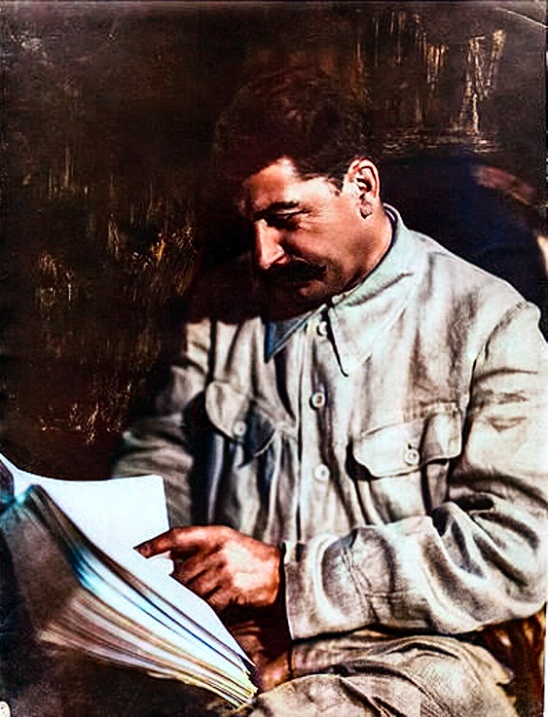Image is of the Power of Siberia natural gas pipeline, which transports gas from Russia to China. This isn’t an oil pipeline (such as the ESPO) but I thought it looked cool. Source here.
Trump has recently proposed a 500% tariff on goods from countries that trade with Russia, including India and China (who buy ~70% of Russia’s oil output), as well as a 10% additional tariff on goods from countries that “align themselves with BRICS.” Considering that China is the largest trading partner of most of the countries on the planet at this point, and India and Brazil are reasonably strong regional players, I’m not sure what exactly “alignment” means, but it could be pretty bad.
Sanctions and tariffs on Russian products have been difficult to achieve in practice. It’s easy to write an order to sanction Russia, but much harder to actually enforce these sorts of things because of, for example, the Russian shadow oil fleet, or countries like Kazakhstan acting as covert middlemen (well, as covert as a very sudden oil export boom can be).
Considering that China was pretty soundly victorious last time around, I’m cautiously optimistic, especially because China and India just outright cutting off their supply of energy and fuel would be catastrophic to them (and if Iran and Israel go to war again any time in the near future, it’ll only be more disastrous). Barring China and India kowtowing to Trump and copying Europe vis-a-vis Nordstream 2 (which isn’t impossible, I suppose), the question is whether China and India will appear to accede to these commands while secretly continuing trade with Russia through middlemen, or if they will be more defiant in the face of American pressure.
Last week’s thread is here.
The Imperialism Reading Group is here.
Please check out the RedAtlas!
The bulletins site is here. Currently not used.
The RSS feed is here. Also currently not used.
Israel-Palestine Conflict
Sources on the fighting in Palestine against Israel. In general, CW for footage of battles, explosions, dead people, and so on:
UNRWA reports on Israel’s destruction and siege of Gaza and the West Bank.
English-language Palestinian Marxist-Leninist twitter account. Alt here.
English-language twitter account that collates news.
Arab-language twitter account with videos and images of fighting.
English-language (with some Arab retweets) Twitter account based in Lebanon. - Telegram is @IbnRiad.
English-language Palestinian Twitter account which reports on news from the Resistance Axis. - Telegram is @EyesOnSouth.
English-language Twitter account in the same group as the previous two. - Telegram here.
English-language PalestineResist telegram channel.
More telegram channels here for those interested.
Russia-Ukraine Conflict
Examples of Ukrainian Nazis and fascists
Examples of racism/euro-centrism during the Russia-Ukraine conflict
Sources:
Defense Politics Asia’s youtube channel and their map. Their youtube channel has substantially diminished in quality but the map is still useful.
Moon of Alabama, which tends to have interesting analysis. Avoid the comment section.
Understanding War and the Saker: reactionary sources that have occasional insights on the war.
Alexander Mercouris, who does daily videos on the conflict. While he is a reactionary and surrounds himself with likeminded people, his daily update videos are relatively brainworm-free and good if you don’t want to follow Russian telegram channels to get news. He also co-hosts The Duran, which is more explicitly conservative, racist, sexist, transphobic, anti-communist, etc when guests are invited on, but is just about tolerable when it’s just the two of them if you want a little more analysis.
Simplicius, who publishes on Substack. Like others, his political analysis should be soundly ignored, but his knowledge of weaponry and military strategy is generally quite good.
On the ground: Patrick Lancaster, an independent and very good journalist reporting in the warzone on the separatists’ side.
Unedited videos of Russian/Ukrainian press conferences and speeches.
Pro-Russian Telegram Channels:
Again, CW for anti-LGBT and racist, sexist, etc speech, as well as combat footage.
https://t.me/aleksandr_skif ~ DPR’s former Defense Minister and Colonel in the DPR’s forces. Russian language.
https://t.me/Slavyangrad ~ A few different pro-Russian people gather frequent content for this channel (~100 posts per day), some socialist, but all socially reactionary. If you can only tolerate using one Russian telegram channel, I would recommend this one.
https://t.me/s/levigodman ~ Does daily update posts.
https://t.me/patricklancasternewstoday ~ Patrick Lancaster’s telegram channel.
https://t.me/gonzowarr ~ A big Russian commentator.
https://t.me/rybar ~ One of, if not the, biggest Russian telegram channels focussing on the war out there. Actually quite balanced, maybe even pessimistic about Russia. Produces interesting and useful maps.
https://t.me/epoddubny ~ Russian language.
https://t.me/boris_rozhin ~ Russian language.
https://t.me/mod_russia_en ~ Russian Ministry of Defense. Does daily, if rather bland updates on the number of Ukrainians killed, etc. The figures appear to be approximately accurate; if you want, reduce all numbers by 25% as a ‘propaganda tax’, if you don’t believe them. Does not cover everything, for obvious reasons, and virtually never details Russian losses.
https://t.me/UkraineHumanRightsAbuses ~ Pro-Russian, documents abuses that Ukraine commits.
Pro-Ukraine Telegram Channels:
Almost every Western media outlet.
https://discord.gg/projectowl ~ Pro-Ukrainian OSINT Discord.
https://t.me/ice_inii ~ Alleged Ukrainian account with a rather cynical take on the entire thing.


Southeast Asia and the ‘middle democracy’ trap
TLDR: Liberals in Southeast Asia are much more sophisticated in hiding their class affinities than those in the West.
the article with commentary
In Brief
For the Western observer who live their lives on the throne of the blood and skulls of the colonized, Global South aspirations of development seem idealistic and nonsensical. But when you have lived in the villages tucked away in the jungles, with no running water or electricity, it becomes real, not rhetorical - something material that needs changing.
For a professor of political science, you seem to jumble your words. The anti-communist states of Southeast Asia were Third World - not Second - and only Singapore was the only country who wanted to uncritically ascend and claim to “First World”. Here is also where falling-back to a generalising “Southeast Asian” umbrella without addressing the specificities that characterise the political-economy of each country results in an analysis without the facts, or in other words, a writing without meaning.
History to liberals marks semi-connected events portrayed to them by mainstream media without any sort of introspection, which is why they are always wrong, having only gotten 5% of the entire picture.
Democracy in the Global South is a perpetual victim that needs saving from the United States - this I think more accurately characterises the article’s position than the idealistic bubble it tries to insulate itself with.
Perhaps an indirect admittance that colour revolution tactics elsewhere in the world failed to gained any sort of relevance in Southeast Asia. But regardless, this sort of “apolitical” “democracy promotion” throughout this article absolves the role of the United States in enacting economic siege on Southeast Asian economies, and blames the plight of under-development as merely inevitable. Will this lead to any thorough introspection of what democracy means beside the mainstream liberal understanding of “procedures”?
I doubt it.
How much does this guy make writing articles about how the poors care too much about living and not much about crossing a paper every 5 years?
You mean the country that suffered the most under the Asian Financial Crisis, now poorer than China, dealing with multiple instabilities at its borders, is the country in which political mobilisation is much more established? Color me shocked!
You all get paid to speak nonsense.
The irony is so painful it’s searing my eyeballs.
The narrowing of political discourse between democracy and selective US foreign policy choices is about what I expected for the filth called the East Asian Forum. I critically support Amerikan (and in this case, Australian aswell) Academia in directly stunting and hampering effective countermeasures to Global South autonomy.
Midwest freak needs to go fishing instead of wasting everyone’s time talking about topics outside their intellectual capability.